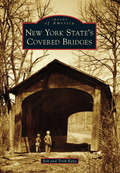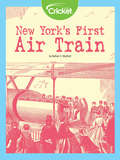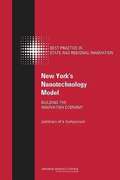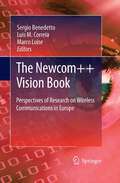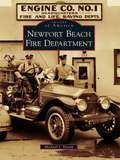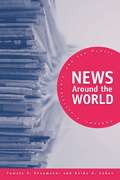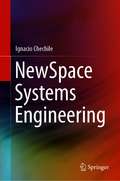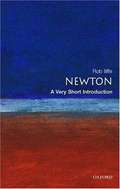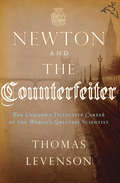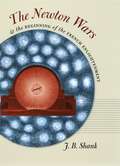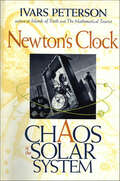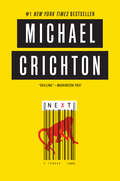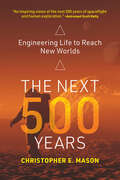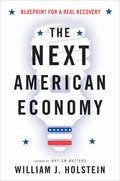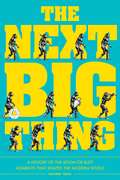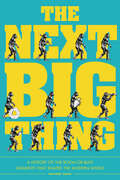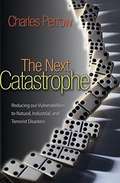- Table View
- List View
New York State's Covered Bridges
by Trish Kane Bob KaneAt one time, New York State had over 300 covered bridges, but over the years, floods, fires, and modernization have claimed all but 32 of them. Both the Hyde Hall Covered Bridge and the Old Blenheim Bridge are proud record holders. Located in Glimmerglass State Park, the Hyde Hall Covered Bridge is the oldest existing covered bridge in the United States. The Old Blenheim Bridge was the longest single-span covered bridge in the world until it was washed away by Tropical Storm Irene in 2011 when the Schoharie Creek flooded. Today, Oxford, New York, is home to the Theodore Burr Covered Bridge Resource Center, which was specifically designed for covered bridge researchers--the first-ever center of its kind.
New York's First Air Train
by Nathan S. MayfieldDid you know that one of the first air-powered subway stations was invented by a man named Alfred Beach? It operated under the streets of New York City. As the population grew, so did the need for transportation services. The subway was developed when the mail tunnel was being created as well. Discover one of the long-lost gems that makes up a part of New York City's history!
New York's Golden Age of Bridges
by Antonio Masi Joan Marans DimIn New York’s Golden Age of Bridges, artist Antonio Masi teams up with writer and New York City historianJoan Marans Dim to offer a multidimensional exploration of New York City’s nine major bridges, their artistic andcultural underpinnings, and their impact worldwide.The tale of New York City’s bridges begins in 1883, when the Brooklyn Bridge rose majestically over the East River, signaling the start of America’s “Golden Age” of bridge building. The Williamsburg followed in 1903, the Queensboro (renamed the Ed Koch Queensboro Bridge) and the Manhattan in 1909, the George Washington in 1931, the Triborough (renamed the Robert F. Kennedy Bridge) in 1936, the Bronx-Whitestone in 1939, the Throgs Neck in 1961, and the Verrazano-Narrows in 1964. Each of these classic bridges has its own story, and the book’s paintings show the majesty and artistry, while the essays fill in the fascinating details ofits social, cultural, economic, political, and environmental history.America’s great bridges, built almost entirely by immigrant engineers, architects, and laborers, have come to symbolize not only labor and ingenuity but also bravery and sacrifice. The building of each bridge took a human toll. The Brooklyn Bridge’s designer and chief engineer, John A. Roebling, himself died in the service of bridge building. But beyond those stories is another narrative—one that encompasses the dreams and ambitions of a city, and eventually a nation. At this moment in Asia and Europe many modern, largescale, long-span suspension bridges are being built. They are the progeny of New York City’s Golden Age bridges. This book comes along at the perfect moment to place these great public projects into their historical and artistic contexts and to inform and delight artists, engineers, historians, architects, and city planners. In addition to the historical and artistic perspectives, New York’s Golden Age of Bridges explores the inestimable connections that bridges foster, and reveals the extraordinary impact of the nine Golden Age bridges on the city, the nation, and the world.
New York's Nanotechnology Model
by Committee on Competing in the 21st Century: Best Practice in State and Regional Innovation Initiatives Board on Science, Technology, and Economic Policy Policy and Global Affairs National Research Council Charles W. WessnerNew York's Nanotechnology Model: Building the Innovation Economy is the summary of a 2013 symposium convened by the National Research Council Board on Science, Technology, and Economic Policy and members of the Nano Consortium that drew state officials and staff, business leaders, and leading national figures in early-stage finance, technology, engineering, education, and state and federal policies to review challenges, plans, and opportunities for innovation-led growth in New York. The symposium participants assessed New York's academic, industrial, and human resources, identified key policy issues, and engaged in a discussion of how the state might leverage regional development organizations, state initiatives, and national programs focused on manufacturing and innovation to support its economic development goals. This report highlights the accomplishments and growth of the innovation ecosystem in New York, while also identifying needs, challenges, and opportunities. New York's Nanotechnology Model reviews the development of the Albany nanotech cluster and its usefulness as a model for innovation-based growth, while also discussing the New York innovation ecosystem more broadly.
The Newcom++ Vision Book
by Marco Luise Luis M. Correia Sergio BenedettoThe Book contains the Vision of the researchers of the European Network of Excellence NEWCOM++ (Network of Excellence on Wireless COMmunication) on the present and future status of Wireless Communication Networks. In its content, the community of NEWCOM++ researchers, shaped under the common ground of a mainly academic network of excellence, have distilled their scientific wisdom in a number of areas characterized by the common denominator of wireless communications, by identifying the medium-long term research tendencies/problems, describing the tools to face them and providing a relatively large number of references for the interested reader. The identified areas and the researchers involved in their redaction reflect the intersection of the major topics in wireless communications with those that are deeply investigated in NEWCOM++; they are preceded by an original description of the main trends in user/society needs and the degree of fulfilment that ongoing and future wireless communications standards will more likely help achieving. The appendix of the Book contains a list of "Millenium Problems", seminal problems in the area of wireless communication networks, characterized by being crucial and still unsolved. The problems have been identified by NEWCOM++ researchers and filtered by the editors of the Vision Book.
The Newman Lectures on Mathematics
by John Newman Vincent Battaglia<p>Prof. Newman is considered one of the great chemical engineers of his time. His reputation derives from his mastery of all phases of the subject matter, his clarity of thought, and his ability to reduce complex problems to their essential core elements. He is a member of the National Academy of Engineering, Washington, DC, USA, and has won numerous national awards including every award offered by the Electrochemical Society, USA. His motto, as known by his colleagues, is "do it right the first time." He has been teaching undergraduate and graduate core subject courses at the University of California, Berkeley (UC Berkeley), USA, since joining the faculty in 1966. His method is to write out, in long form, everything he expects to convey to his class on a subject on any given day. He has maintained and updated his lecture notes from notepad to computer throughout his career. This book is an exact reproduction of those notes. <p>This book shows a clean and concise way on how to use different analytical techniques to solve equations of multiple forms that one is likely to encounter in most engineering fields, especially chemical engineering. It provides the framework for formulating and solving problems in mass transport, fluid dynamics, reaction kinetics, and thermodynamics through ordinary and partial differential equations. It includes topics such as Laplace transforms, Legendre’s equation, vector calculus, Fourier transforms, similarity transforms, coordinate transforms, conformal mapping, variational calculus, superposition integrals, and hyperbolic equations. The simplicity of the presentation instils confidence in the readers that they can solve any problem they come across either analytically or computationally.</p>
Newnes Building Services Pocket Book (Newnes Pocket Bks.)
by John Knight Andrew Prentice W.P. JonesNewnes Building Services Pocket Book is a unique compendium of essential data, techniques and procedures, best practice, and underpinning knowledge. This makes it an essential tool for engineers involved in the design and day-to-day running of mechanical services in buildings, and a valuable reference for managers, students and engineers in related fields.This pocket reference gives the reader access to the knowledge and knowhow of the team of professional engineers who wrote the sixteen chapters that cover all aspects of mechanical building services. Topic coverage includes heating systems, ventilation, air conditioning, refrigeration, fans, ductwork, pipework and plumbing, drainage, and fire protection. The result is a comprehensive guide covering the selection of HVAC systems, and the design process from initial drafts through to implementation. The second edition builds on the success of this popular guide with references to UK and EU legislation fully updated throughout, and coverage fully in line with the latest CIBSE guides.
Newnes Electrical Pocket Book (Newnes Pocket Books)
by E A Reeves Martin HeathcoteNewnes Electrical Pocket Book is the ideal daily reference source for electrical engineers, electricians and students. First published in 1932 this classic has been fully updated in line with the latest technical developments, regulations and industry best practice. Providing both in-depth knowledge and a broad overview of the field this pocket book is an invaluable tool of the trade.A handy source of essential information and data on the practice and principles of electrical engineering and installation.The 23rd edition has been updated by engineering author and consultant electrical engineer, Martin Heathcote. Major revisions have been made to the sections on semiconductors, power generation, transformers, building automation systems, electric vehicles, electrical equipment for use in hazardous areas, and electrical installation (reflecting the changes introduced to the IEE Wiring Regulations BS7671: 2001).
Newnes Engineering Science Pocket Book (Newnes Pocket Books)
by John BirdNewnes Engineering Science Pocket Book is a uniquely versatile and practical tool for a wide range of engineers and students. All the fundamentals of electrical and mechanical engineering science and physics are covered, with an emphasis on concise descriptions, key methods, clear diagrams, formulae and how to use them. John Bird's presentations of this core material puts all the answers at your fingertips.The contents of this book have been carefully matched to the latest Further and Higher Education syllabuses so that it can also be used as a revision guide or a quick-access source of underpinning knowledge. Students on competence-based courses such as NVQs will find this approach particularly refreshing and practical.This book and its companion title, Newnes Engineering Mathematics Pocket Book, provide the underpinning knowledge for the whole range of engineering communities catered for by the Newnes Pocket Book series. These related titles include:Newnes Mechanical Engineer's Pocket Book (Timings)Newnes Electrical Pocket Book (Reeves)Newnes Electronic Engineer's Pocket Book (Carr & Brindley)Newnes Radio and RF Engineer's Pocket Book (Carr & Davies)Newnes Telecommunications Engineer's Pocket Book (Winder) Previous editions of Newnes Engineering Science Pocket Book were published under the title Newnes Engineering and Physical Science Pocket Book.
Newnes Industrial Control Wiring Guide
by R B MercerThis Newnes manual provides a practical introduction to the standard methods and techniques of assembly and wiring of electrical and electromechanical control panels and equipment. Electricians and technicians will find this a useful reference during training and a helpful memory aid at work. This is a highly illustrated guide, designed for ready use. The contents are presented in pictures and checklists. Each page has a series of 'how-to' instructions and illustrations. In this way the subject is covered in a manner which is easy to follow. Each step adds up to a comprehensive course in control panel wiring.This new edition includes extra underlying theory to help the technician plus application notes and limitations of use. Simple programmable logic controllers (PLCs) are covered, as well as new information about EMC/EMI regulations and their impact.
Newport Beach Fire Department (Images of America)
by Michael J. NovakFor nearly a century, the men and women of the Newport Beach Fire Department have served their Orange County community with dedication, professionalism, and grace. Starting with a primitive hose reel and a dozen volunteers in 1911, determined Newport Beach firefighters protected the always tourism-friendly community with more dedication than equipment. In 1927, the volunteers were disbanded and a paid fire department was organized. This volume celebrates 100 years of the Newport Beach Fire Department's exemplary service by combining historical photographs with a narrative that traces the evolution of firefighting in Newport Beach from its turn-of-the-century roots to the state-of-the-art operation it is today, entrusted with protecting one of coastal California's most affluent and picturesque showcase communities.
News Around the World: Content, Practitioners, and the Public
by Pamela J. Shoemaker Akiba A. CohenWhat's news? A front-page news story in the United States might not appear in a newspaper in China. Or a minor story on German television may be all over the airwaves in India. But News Around the World shows that the underlying nature of news is much the same the world over and that people--no matter what their jobs or their status in society--tend to hold similar notions of newsworthiness. In this richly detailed study of international news, news makers and the audience, the authors have undertaken exhaustive original research within two cities--one major and one peripheral--in each of ten countries: Australia, Chile, China, Germany, India, Israel, Jordan, Russia, South Africa, and the United States. The nations were selected for study based on a central principle of maximizing variation in geographic locations, economic and political systems, languages, sizes, and cultures. The remarkable scope of the research makes this the most comprehensive analysis of newsworthiness around the globe: 10 countries studied, each with a university country director 2 cities in each country examined, one major and one peripheral 60 news media studied (newspapers, television, and radio news programs), resulting in 32,000+ news items analyzed 80 focus groups with journalists, public relations practitioners, and audience members 2,400 newspaper stories ranked according to newsworthiness and compared with how prominently they were published. News Around the World provides remarkable insight into how and why news stories are reported, testing and improving a theory of cross-cultural newsworthiness and is essential reading for anyone seeking to understand international media and journalism.
NewSpace Systems Engineering
by Ignacio ChechileThis book provides a guide to engineering successful and reliable products for the NewSpace industry. By discussing both the challenges involved in designing technical artefacts, and the challenges of growing an organisation, the book presents a unique approach to the topic.New Space Systems Engineering explores numerous difficulties encountered when designing a space system from scratch on limited budgets, non-existing processes, and great deal of organizational fluidity and emergence. It combines technical topics related to design, such as system requirements, modular architectures, and system integration, with topics related to organizational design, complexity, systems thinking, design thinking and a model based systems engineering. Its integrated approach mean this book will be of interest to researchers, engineers, investors, and early-stage space companies alike. It will help New Space founders and professionals develop their technologies and business practices, leading to more robust companies and engineering development.
Newton: A Very Short Introduction
by Robert IliffeNewton's reputation was the subject of intense debate long before his death in 1727. While alive, numerous opponents sought to topple his theories, and his views on religion were considered by many to be unorthodox. For the vast majority of scholars, however, his groundbreaking approach to science overrode all else. This book makes use of previously unpublished private writings and manuscript sources to present a concise exploration of the internal springs of Newton's complex character. Robert Iliffe describes Newton's studies in fields ranging from alchemy, physics, and mathematics, as well as his controversial religious beliefs, and concludes with a consideration of the legacy left after his demise. Newton will gratify readers who are interested in the real history behind one of the world's most legendary scientists.
Newton and the Counterfeiter: The Unknown Detective Career of the World's Greatest Scientist
by Thomas LevensonA &“thoroughly surprising&” chapter in the life of Isaac Newton, with a &“vivid re-creation of 17th-century London and its fascinating criminal haunts&” (Providence Journal). When renowned scientist Isaac Newton takes up the post of Warden of His Majesty&’s Mint in London, another kind of genius—a preternaturally gifted counterfeiter named William Chaloner—has already taken up residence in the city, rising quickly in an unruly, competitive underworld. In the courts and streets of London, and amid the tremors of a world being transformed by ideas Newton himself set in motion, Chaloner crosses paths with the formidable new warden. An epic game of cat and mouse ensues in Newton and the Counterfeiter, revealing for the first time the &“remarkable and true tale of the only criminal investigator who was far, far brainier than even Sherlock Holmes: Sir Isaac Newton during his tenure as Warden of the Royal Mint . . . A fascinating saga&” (Walter Isaacson). &“I absolutely loved Newton and the Counterfeiter. Deft, witty and exhaustively researched.&” —Junot Díaz, author of The Brief Wondrous Life of Oscar Wao &“A delicious read, featuring brilliant detective work and a captivating story . . . A virtuoso performance.&” —Sylvia Nasar, author of A Beautiful Mind &“Through a page-turning narrative, we witness Isaac Newton&’s genius grappling with the darker sides of human nature, an all too human journey reflecting his deepest beliefs about the cosmic order.&” —Brian Greene, author of The Fabric of the Cosmos &“Levenson transforms inflation and metallurgy into a suspenseful detective story bolstered by an eloquent summary of Newtonian physics and stomach-turning descriptions of prison life in the Tower of London. . . . [The book] humanizes a legend, transforming him into a Sherlock Holmes in pursuit of his own private Moriarty.&” —The Washington Post
The Newton Wars and the Beginning of the French Enlightenment
by J. B. ShankNothing is considered more natural than the connection between Isaac Newton's science and the modernity that came into being during the eighteenth-century Enlightenment. Terms like "Newtonianism" are routinely taken as synonyms for "Enlightenment" and "modern" thought, yet the particular conjunction of these terms has a history full of accidents and contingencies. Modern physics, for example, was not the determined result of the rational unfolding of Newton's scientific work in the eighteenth century, nor was the Enlightenment the natural and inevitable consequence of Newton's eighteenth-century reception. Each of these outcomes, in fact, was a contingent event produced by the particular historical developments of the early eighteenth century. A comprehensive study of public culture,The Newton Wars and the Beginning of the French Enlightenmentdigsbelow the surface of the commonplace narratives that link Newton with Enlightenment thought to examine the actual historical changes that brought them together in eighteenth-century time and space. Drawing on the full range of early modern scientific sources, from studied scientific treatises and academic papers to book reviews, commentaries, and private correspondence, J. B. Shank challenges the widely accepted claim that Isaac Newton's solitary genius is the reason for his iconic status as the father of modern physics and the philosophemovement.
Newton's Clock: Chaos in the Solar System
by Ivars PetersonWith his critically acclaimed best-sellers The Mathematical Toursist and Islands of Truth, Ivars Peterson took readers to the frontiers of modern mathematics. His new book provides an up-to-date look at one of science's greatest detective stories: the search for order in the workings of the solar system.In the late 1600s, Sir Isaac Newton provided what astronomers had long sought: a seemingly reliable way of calculating planetary orbits and positions. Newton's laws of motion and his coherent, mathematical view of the universe dominated scientific discourse for centuries. At the same time, observers recorded subtle, unexpected movements of the planets and other bodies, suggesting that the solar system is not as placid and predictable as its venerable clockwork image suggests.Today, scientists can go beyond the hand calculations, mathematical tables, and massive observational logs that limited the explorations of Newton, Copernicus, Galileo, Kepler, Tycho Brahe, and others. Using supercomputers to simulate the dynamics of the solar system, modern astronomers are learning more about the motions they observe and uncovering some astonishing examples of chaotic behavior in the heavens. Nonetheless, the long-term stability of the solar system remains a perplexing, unsolved issue, with each step toward its resolution exposing additional uncertainties and deeper mysteries.To show how our view of the solar system has changed from clocklike precision to chaos and complexity, Newton's Clock describes the development of celestial mechanics through the ages--from the star charts of ancient navigators to the seminal discoveries of the 17th centure; from the crucial work of Poincaré to the startling, sometimes controversial findings and theories made possible by modern mathematics and computer simulations. The result makes for entertaining and provocative reading, equal parts science, history, and intellectual adventure.
Next
by Michael CrichtonIs a loved one missing some body parts? Are blondes becoming extinct? Is everyone at your dinner table of the same species? Humans and chimpanzees differ in only 400 genes; is that why a chimp fetus resembles a human being? And should that worry us? There's a new genetic cure for drug addiction--is it worse than the disease? We live in a time of momentous scientific leaps, a time when it's possible to sell our eggs and sperm online for thousands of dollars and to test our spouses for genetic maladies.We live in a time when one fifth of all our genes are owned by someone else, and an unsuspecting person and his family can be pursued cross-country because they happen to have certain valuable genes within their chromosomes . . .Devilishly clever, Next blends fact and fiction into a breathless tale of a new world where nothing is what it seems and a set of new possibilities can open at every turn.Next challenges our sense of reality and notions of morality. Balancing the comic and the bizarre with the genuinely frightening and disturbing, Next shatters our assumptions and reveals shocking new choices where we least expect. The future is closer than you think.
The Next 500 Years: Engineering Life to Reach New Worlds
by Christopher E. MasonAn argument that we have a moral duty to colonize other planets and solar systems, and a plan for doing so.Inevitably, life on Earth will come to an end, whether by climate disaster, or by cataclysmic war, or when the sun runs out of fuel in a few billion years. To avoid extinction, will we have to find a new home planet, perhaps even a new solar system, to inhabit? In this provocative and fascinating book, Christopher Mason argues that we have a moral duty to do just that. Because we are the only species aware that life on Earth has an expiration date, we have a responsibility to act as the shepherd of lifeforms--not only for our species but for all species on which we depend and for those still to come (by accidental or designed evolution). Mason argues that the same capacity for ingenuity that has enabled us to build rockets and land on other planets can be applied to redesigning biology so that we can sustainably inhabit those planets. And he lays out a 500-year plan for undertaking the massively ambitious project of reengineering human genetics for life in other worlds.
The Next Age of Disruption (The Digital Future of Management)
by MIT Sloan Management ReviewManagement experts discuss the innovation challenges that lie ahead, building on Clayton Christensen's famous theory of "disruptive innovation."Clayton Christensen's groundbreaking theory of "disruptive innovation" has proven to be one of the most influential management ideas of the last several decades. In this book, business and management experts--many of them Christensen's colleagues and former students--discuss the innovation challenges that lie ahead. Building on Christensen's work, they offer companies a guide for navigating a new world of disruption--a future in which artificial intelligence is a business tool, the speed of innovation increases dramatically, and capital is more easily accessible. The book also includes one of the last interviews with Christensen before his death in January 2020.
The Next American Economy: Blueprint for a Real Recovery
by William HolsteinAt a time when debate is raging about how to create jobs and revive the American economy, veteran business writer William J. Holstein argues that the best way for us to recover our economic footing is to do what Americans do best--innovate and create new industries. Contrary to the perception that the American economy has run out of inspiration and new ideas, Holstein uses compelling case studies to celebrate the innovation and business success being experienced in many industries, from technology and energy to retraining and exporting, across the country, from Boston to Orlando, Pittsburgh to San Diego. In the face of economic powerhouses such as Japan and China that are pursuing conscious national strategies, Holstein argues that Americans must find new avenues of cooperation among universities, business, and government to create the kind of sustainable growth we need. Replete with fresh insights into how Americans can create a real economic recovery,The Next American Economyis essential reading for business leaders, politicians, strategists, and anyone who cares about our future.
The Next Big Thing: A History of the Boom-or-Bust Moments That Shaped the Modern World
by Richard FaulkWe are always hearing about the Next Big Thing. Whether it is a new iPhone or the New World, the freshest and newest inventions, discoveries, and fads loom large in the public mind. The impact that everyone thinks these "next big things" will have is often more important than the actual impact it generates. After all, if it fails, it will be almost immediately forgotten. The Next Big Thing searches through 3,000 years of Western culture to find the colorful and key steps (and missteps) that led us to where we are today. Paradigm-shifting events, such as the spread of ethical monotheism and the invention of the printing press stand beside such cultural ephemera as the aborted U.S metric campaign and the misbegotten vogue for smart drinks. Each entry features the historical context of that Next Big Thing as well as an overview of its legacy, including photos, sidebars, trivia, and quotes.
The Next Big Thing: A History of the Boom-or-Bust Moments That Shaped the Modern World
by Richard FaulkWe are always hearing about the Next Big Thing. Whether it is a new iPhone or the New World, the freshest and newest inventions, discoveries, and fads always loom large in the public mind. The impact that everyone thinks these "next big things" will have is often more important than the actual impact it generates. After all, if it fails, it will be almost immediately forgotten. The Next Big Thing searches through 3,000 years of Western culture to find the colorful and key steps (and missteps) that led us to where we are today.
The Next Big Thing Is Really Small: How Nanotechnology Will Change the Future of Your Business
by Jack Uldrich Deb Newberrynanotechnology \na-no--tek-'nä-l -je-\ n (1987): the science of manipulating material at the atomic levelAlthough nanotechnology deals with the very small—a nanometer is 1/80,000th the diameter of a human hair—it is going to be huge. From the food we eat, the clothes we wear, and the products we manufacture to the composition of our bodies, everything is made of atoms. And if we can manipulate the atom, then that changes the rules of the game for almost every product.Coal and diamonds, for example, are both constructed from carbon atoms. It’s merely the arrangement of the atoms that differentiates an inexpensive fuel source from a pricey engagement jewel. While the science of nanotech cannot yet transform coal into diamonds, it is advancing rapidly and will begin to radically alter the business world during the next few years—and will continue to do so for the forseeable future. The buzz surrounding nanotech is comparable to that at the dawn of the digital revolution, which changed the face of how business operates. Unlike the Internet, however, which applied new technology to many old processes and businesses, nanotech is about creating entirely new materials, products, and systems (and therefore markets), as well as making existing products faster, stronger, and better.You may be tempted to wait until the buzz dies down before deciding how to integrate nanotech into your business, but don’t make the mistake of thinking of it as being light-years away. Even though it may sound far-off at times, within ten years nanotech will have huge effects on many industries, including manufacturing, health care, energy, agriculture, communications, transportation, and electronics. Within a decade, nanotechnology is expected to be the basis of $1 trillion worth of products in the United States alone and will create anywhere from 800,000 to 2 million new jobs. Nanotechnology will require you to radically re-think what your core business is, who your competitors are, what skills your workforce needs, how to train your employees, and how to think strategically about the future. Jack Uldrich and Deb Newberry explain exactly how you should prepare for nanotech’s imminent arrival. They identify today’s nanotech innovators, chronicle and project the rapid rise of nanotech developments, and show how to think strategically about the field’s opportunities and investments. The Next Big Thing Is Really Small provides a sneak peek at the technology that will transform the next ten years, giving investors and executives a road map for using small wonders to generate big profits.
The Next Catastrophe: Reducing Our Vulnerabilities to Natural, Industrial, and Terrorist Disasters
by Charles PerrowCharles Perrow is famous worldwide for his ideas about normal accidents, the notion that multiple and unexpected failures--catastrophes waiting to happen--are built into our society's complex systems. In The Next Catastrophe, he offers crucial insights into how to make us safer, proposing a bold new way of thinking about disaster preparedness. Perrow argues that rather than laying exclusive emphasis on protecting targets, we should reduce their size to minimize damage and diminish their attractiveness to terrorists. He focuses on three causes of disaster--natural, organizational, and deliberate--and shows that our best hope lies in the deconcentration of high-risk populations, corporate power, and critical infrastructures such as electric energy, computer systems, and the chemical and food industries. Perrow reveals how the threat of catastrophe is on the rise, whether from terrorism, natural disasters, or industrial accidents. Along the way, he gives us the first comprehensive history of FEMA and the Department of Homeland Security and examines why these agencies are so ill equipped to protect us. The Next Catastrophe is a penetrating reassessment of the very real dangers we face today and what we must do to confront them. Written in a highly accessible style by a renowned systems-behavior expert, this book is essential reading for the twenty-first century. The events of September 11 and Hurricane Katrina--and the devastating human toll they wrought--were only the beginning. When the next big disaster comes, will we be ready?
